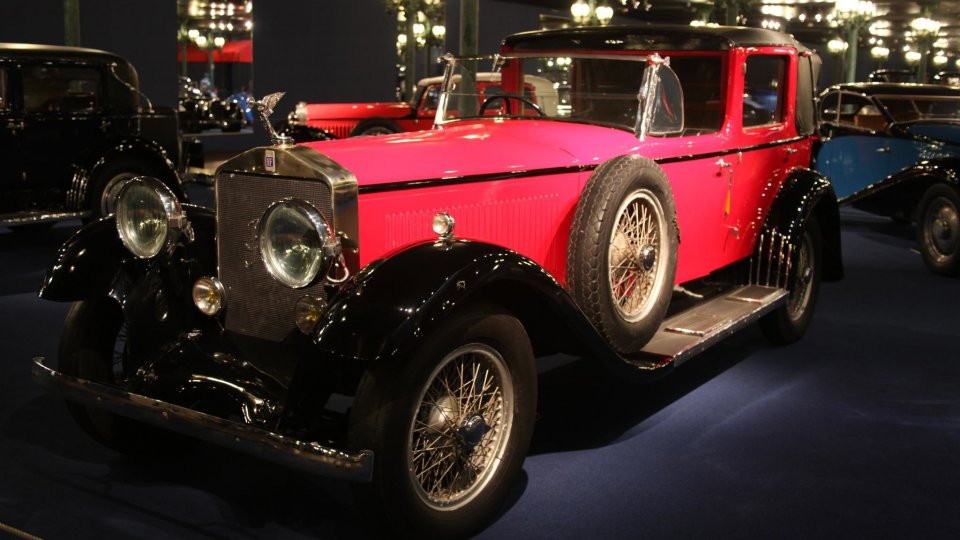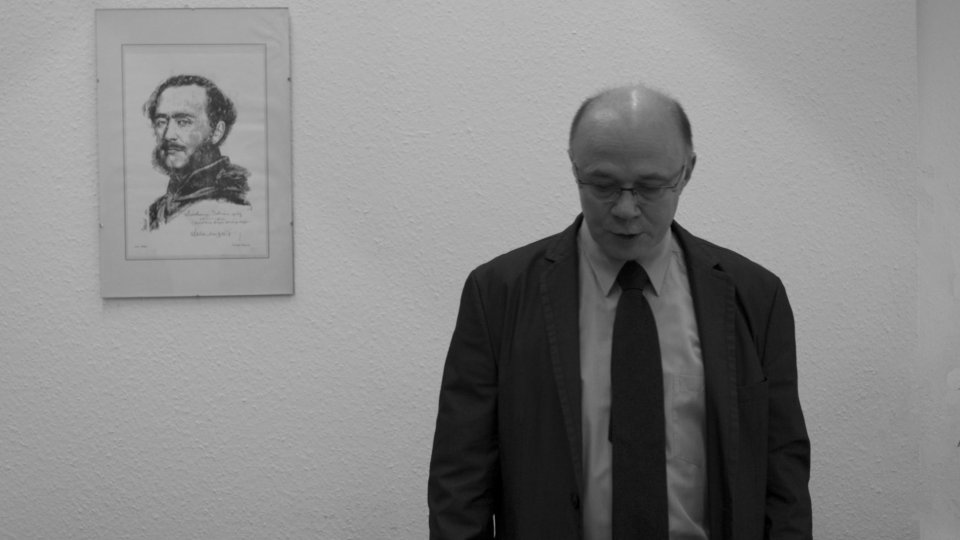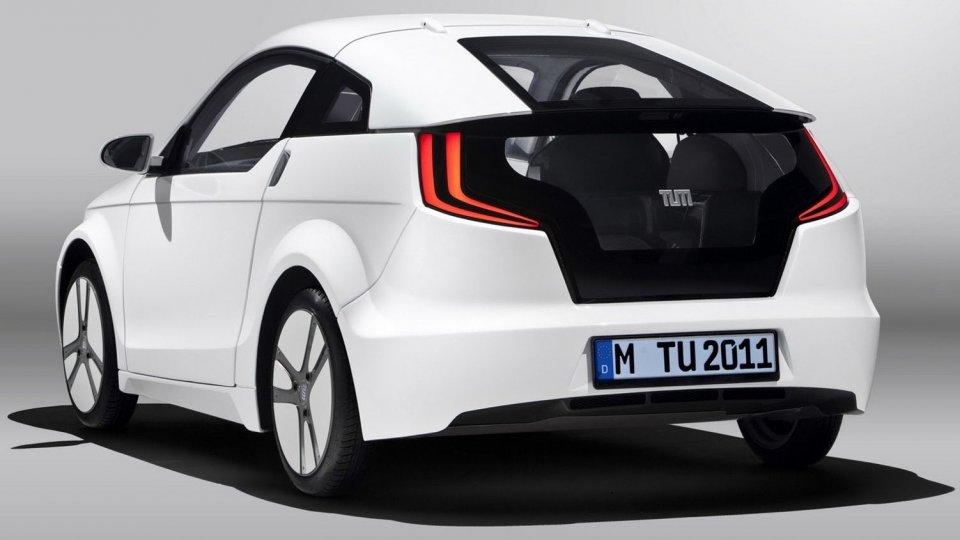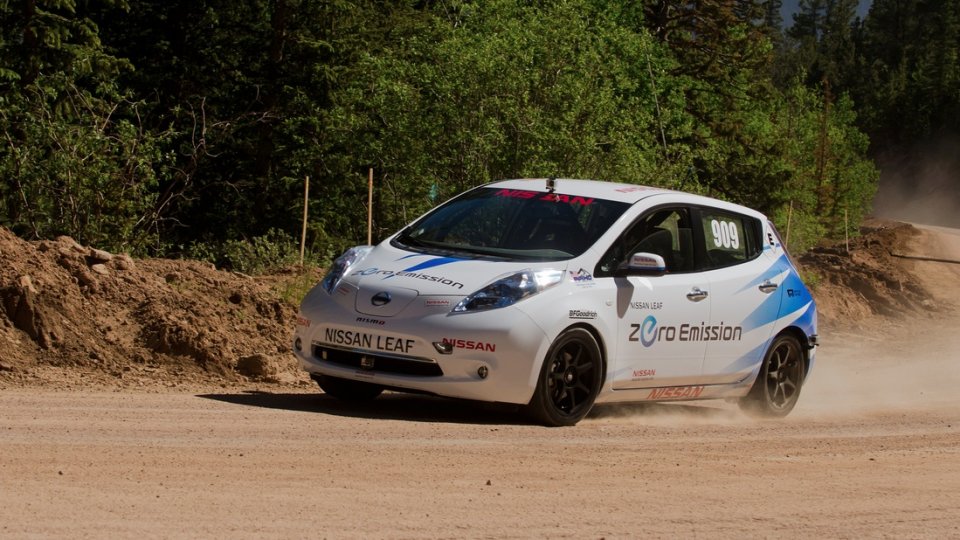Not All Apparent Alternatives are Viable Ones
Dr. Barna Hanula, head of the Vehicle Engineering Department Group jointly operated by the Széchenyi István University at Győr and the carmaker Audi Hungaria has devoted his whole life to engine development. Having recently returned to Hungary after working in Germany for two decades, the engineering expert is both excited and alarmed to see the route of development for alternative mobility. "Visionaries are promoting not only viable solutions but also many dead end streets" - he warns us.

– Before getting down to alternative mobility there is one thing I need to ask you. After contributing to the design of various supercars, including the 100 HP Bugatti Veyron, why would you feature a pinkish oldtimer in your Facebook profile picture?
– I come from a family of artists, with many relatives actively and professionally involved in arts, from photography through painting to sculpture. I photographed that car simply because I thought it was beautiful; I found it in France, in a museum converted from a former textile factory. But you are right I have always been mostly interested in dissembling powerplants and then assembling them again in a slightly different way. One of my first “creative projects” was the modification of a contemporary passenger car. I was still a high school student and I created what may very well have been the fastest Wartburg of all times. During my university years I raced a Lada equipped with an engine of my own design. Its internals were nothing like the factory engine.

– How did you get from these vehicles of the Eastern Block to the Bugatti Veyron and then back again to Hungary?
– One’s best choices are never made consciously. After I graduated from university I began developing engines in a small garage. A few years later I was approached by the German company Schrick. They offered me a position, and I spent 22 years in the exciting world of international automotive engineering. Whenever new things were taking shape somewhere you’d always find me there. When they first hired me the firm had 60 employees. Ten years later I became general manager, and when I left the company they already had a workforce of 300 people. I returned to Hungary because I was inspired by the initiative nurtured by Audi Hungaria and the Széchenyi István University of Győr which aims to provide a new model of education for engineering students.

– Recently there was a conference at the Hungarian Academy of Sciences on the future role of alternative energy sources in mobility. Speaking at the event you said the importance and viability of electric and hybrid powertrains is far less than attributed by the popular media. Can you elaborate this surprising claim?
– The main issue is our point of view, the direction of approach. When discussing alternative mobility people seem to consider this a wholly philosophical question and disregard technological and economical aspects. We content ourselves with the belief that there is a solution for the future but we blindly disregard the fact that there are obvious disadvantages. Electric drive only yields favourable results if you extend the boundaries of your framework to a range where all your figures will be positive. It is indeed true that the direct emissions of an electric city vehicle are practically zero, but we speak far less about what it costs to achieve this, about how much environmental pollution we cause in the process, and how much we will generate in the long run. We prefer not to discuss the costs of storing electricity until we want to use it. If you look at the wholesale electricity exchange in Leipzig for instance, there are off-peak periods when providers would actually be willing to pay consumers just to use their electricity. Adding all factors up in equal conditions you will find that a modern diesel engine will produce less harmful emissions than an electric vehicle. And that is before considering that switching on the HVAC system of an electric vehicle will drastically curb its useful range, and thereby increase its specific running costs. It is not by chance that most automakers are launching vehicles (Chevrolet Volt, Opel Ampera) that cross the immediate frameworks of e-mobility.

– Your thoughts are intriguing, especially knowing that representatives of the North Rhine-Westphalia region have recently visited Hungary looking for financial and professional partners to support their project creating an e-mobility pilot region by applying significant investments to the field. They seek to populate their roads with e-vehicles by 2020 (a quarter of a million in the region; a million in the whole of Germany), but also to stop all nuclear power plants and replace them with a power grid fed by renewable resources, with a primary focus on solar power.
– Indeed there have been moves to phase out nuclear power plants but it is uncertain how long this approach can be maintained. Recent announcements suggest that Chancellor Merkel has called off the original plans for one million e-vehicles by 2020. And that makes perfect sense: while it costs only 2-2.50 Euro cents to produce 1 kWh of electricity in a nuclear power plant, storing that energy in traction batteries may actually cost up to ten times that much, even using future battery technologies that are still in the pipeline. Solar panel solutions will hardly be able to emerge over the threshold of self-sustenance, meaning you cannot generate significant amounts of energy this way. Environmental research has shown that bio fuels also raise significant issues. Palm oil, for example, seemed like a great business until recent studies showed that plantations were created at the cost of clearing vast areas of rainforest, thereby creating unfathomable damages to the ecosystem. Toyota has chosen to abandon this field altogether. Hybrid systems, on the other hand, still do not yield enough savings that would offset the damages and losses caused in the process of utilising them.

– Your words trigger visions of near apocalyptic proportions, especially considering that the price of fossil fuels continues to rise, while there are more and more vehicles in the world creating an ever increasing environmental problem. And on top of that, your words suggest the proposed alternatives are not viable after all? What do you think we will be driving in 2025?
– I believe what we need to change is our perspective. First of all, public transportation will soon gain increased importance. Today’s model of people having one or more private vehicles and using them to travel everywhere may not be a sustainable approach in the long run. You just cannot carry on doing that. The fundamental issue is that of primary energy production. If we could produce electricity in an environmentally neutral, economical way there would be a host of good options besides the electric car. You can for instance use electricity to create hydrogen for use in fuel cells, or even in internal combustion engines which are a great way to use hydrogen. Also, once you have electricity available, you can create synthetic fuels from basically anything that contains carbon, including CO2 in the atmosphere. And as for fossil fuels, our Earth has plenty of reserves left, except they are all located inconveniently. It is becoming increasingly expensive to harvest them. We have many options and we will find all the right solutions but only if we re-focus and abandon the currently dominating philosophical approach for a more practical economical and technological one.

– Is it time to toll the bell for e-mobility?
– Electric mobility may be a good option for local applications but that should be the end of it. Anything beyond that is just daydreaming. But electricity production will play a crucial role in the energy market of the future. Except we should not be focusing on mobility. Energy production, industries, agriculture have a far greater impact on the environment, therefore developing and improving these areas, adapting new approaches in these fields will yield far greater results for humanity and society than just focusing on mobility and transportation. We have plenty of great alternatives but we need to learn to see the whole picture, to deal with problems in their actual and full context. This is the approach I am trying to promote.







